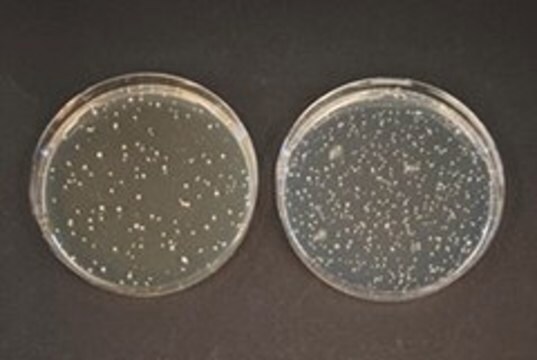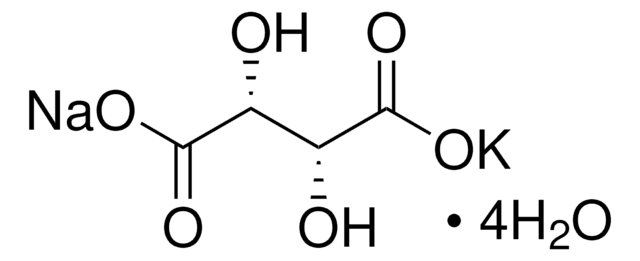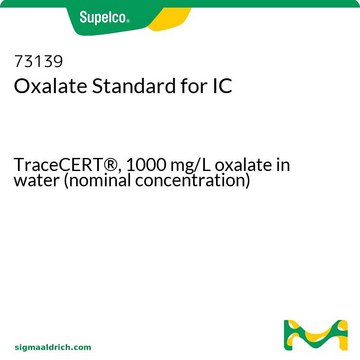Kluczowe dokumenty
71800
Sodium oxalate
puriss. p.a., ACS reagent, ≥99.5% (RT)
Synonim(y):
Ethanedioic acid sodium salt, Oxalic acid disodium salt
About This Item
Polecane produkty
klasa czystości
ACS reagent
puriss. p.a.
Próba
≥99.5% (RT)
Formularz
powder or crystals
zanieczyszczenia
≤0.002% ammonium (NH4)
strata
≤0.01% loss on drying, 105 °C
pH
7-8.5 (25 °C, 2.5% in H2O)
ślady anionów
chloride (Cl-): ≤20 mg/kg
sulfate (SO42-): ≤20 mg/kg
ślady kationów
Ca: ≤100 mg/kg
Cd: ≤10 mg/kg
Co: ≤5 mg/kg
Cr: ≤5 mg/kg
Cu: ≤5 mg/kg
Fe: ≤10 mg/kg
K: ≤50 mg/kg
Mg: ≤10 mg/kg
Mn: ≤50 mg/kg
Ni: ≤5 mg/kg
Pb: ≤5 mg/kg
Zn: ≤5 mg/kg
ciąg SMILES
[Na+].[Na+].[O-]C(=O)C([O-])=O
InChI
1S/C2H2O4.2Na/c3-1(4)2(5)6;;/h(H,3,4)(H,5,6);;/q;2*+1/p-2
Klucz InChI
ZNCPFRVNHGOPAG-UHFFFAOYSA-L
Szukasz podobnych produktów? Odwiedź Przewodnik dotyczący porównywania produktów
Opis ogólny
Zastosowanie
Hasło ostrzegawcze
Warning
Zwroty wskazujące rodzaj zagrożenia
Zwroty wskazujące środki ostrożności
Klasyfikacja zagrożeń
Acute Tox. 4 Dermal - Acute Tox. 4 Oral
Kod klasy składowania
11 - Combustible Solids
Klasa zagrożenia wodnego (WGK)
WGK 1
Temperatura zapłonu (°F)
Not applicable
Temperatura zapłonu (°C)
Not applicable
Wybierz jedną z najnowszych wersji:
Masz już ten produkt?
Dokumenty związane z niedawno zakupionymi produktami zostały zamieszczone w Bibliotece dokumentów.
Klienci oglądali również te produkty
Nasz zespół naukowców ma doświadczenie we wszystkich obszarach badań, w tym w naukach przyrodniczych, materiałoznawstwie, syntezie chemicznej, chromatografii, analityce i wielu innych dziedzinach.
Skontaktuj się z zespołem ds. pomocy technicznej










